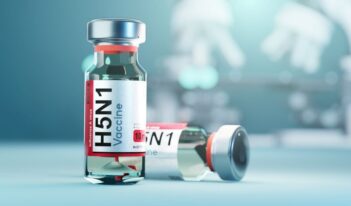
In the face of a massive viral outbreak, a federal regulator issues unprecedented guidance on validating COVID-19 testing.
With the death toll from COVID-19 rising, the U.S. Food and Drug Administration (FDA) recently issued unprecedented guidance to increase the availability of diagnostic tests.
The Centers for Disease Control and Prevention (CDC) has tried to provide as many COVID-19 diagnostic test kits as possible. Unfortunately, the spread of COVID-19 has outpaced the availability of these kits. Recognizing the public health threat, FDA took emergency action in a recent guidance document that permits the development and use of COVID-19 tests before receiving FDA approval.
The Federal Food, Drug, and Cosmetic Act classifies tests used to diagnose COVID-19—called “in vitro” diagnostic (IVD) tests—as medical devices. Normally, any entity developing an IVD test must submit an application to FDA that contains data showing the test is accurate, precise, and reproducible—or “validated.” The test cannot be used, however, until FDA approves the application. This process ensures that tests correctly diagnose patients and prevent unnecessary and potentially harmful treatments.
Alternatively, entities can request from FDA an emergency use authorization (EUA) for a validated test in response to a public health emergency. The test, however, still cannot be used until FDA issues the EUA.
FDA recognized that time delays between when a test is validated and when FDA authorizes the use of a test will only result in more cases of COVID-19. The agency, therefore, recently issued guidance seeking to establish regulatory shortcuts and to expand the types of tests that can be used to diagnose patients.
Significantly, FDA granted state governments the authority to review and approve COVID-19 tests developed at qualified facilities within that state. If the state establishes procedures to receive, review, and approve validated tests, then entities do not have to seek FDA approval for the test.
Should a state elect not to establish such procedures, however, FDA will still allow laboratories certified under the Clinical Laboratory Improvement Amendments to develop and begin using their own COVID-19 tests before submitting an application or a request for an EUA to FDA. These certified laboratories are highly qualified and meet strict standards necessary to perform the complex genetic—or “molecular”—testing needed to diagnose COVID-19.
Viruses, including COVID-19, cause illnesses by injecting genetic material called ribonucleic acid (RNA) into healthy cells. RNA is a type of a genetic blueprint that cells use to build things. For example, RNA can instruct a cell to build a new cell wall, make antibodies to fight an infection, or make other important cellular proteins.
The coronavirus uses RNA to instruct each cell to create more copies of the virus itself. Once the cell builds more copies of the virus, these copies are ejected from the cell and infect other healthy cells. This cycle continues until the immune system can fight off the infection—if it can.
IVD tests must be able to find the small pieces of RNA from COVID-19 to diagnose a patient correctly.
To work, such tests are performed on different fluid types collected from patients. The CDC test kit, for example, requires a sample of saliva, cotton swabs of the nose and throat, as well as a mucous sample from deep in the lungs. Each sample contains healthy cells, dead cells, and potentially infected cells. Labs must then extract all of the genetic material from each sample—consisting of normal DNA and RNA, and possibly viral RNA—in order to begin searching for the COVID-19 “needle” in a sort of genetic haystack.
FDA’s guidance explains the necessary validation tests that laboratories are expected to complete prior to using a test to diagnose patients. Data from the validation tests must accompany a future EUA request.
To that end, the guidance describes a minimum of four validation tests each lab must perform prior to using a new genetic diagnostic test to analyze suspected COVID-19 samples.
Labs must validate the limit of detection for the test. That limit of detection is a measure of how many copies of viral RNA must be present before the test can accurately identify them.
Clinicians must then conduct an evaluation on either samples obtained from COVID-19 patients or samples containing a COVID-19 clone. Such an evaluation shows that the test can find the COVID-19 RNA among the many types of genetic material in a specific type of fluid. For example, labs need to show that their test can find COVID-19 in a saliva sample as well as a sample of mucous.
In addition, the guidance requires inclusivity and cross-reactivity studies to be performed using a computer model.
Inclusivity is a way for labs to prove that their test can identify all of the currently known variations of the COVID-19 virus. Cross-reactivity testing, on the other hand, shows that the test will not mistakenly identify another virus as COVID-19.
FDA’s recent guidance also provides similar validation protocols for blood-based—or “serological”—tests for the COVID-19 virus. These tests function by identifying natural antibodies which infected patients develop to fight off COVID-19. Although these test results may need to be confirmed by another, more complex test, they nonetheless provide an alternative testing method.
Laboratories intending to use any of these diagnostic tests are required to submit validation data with any request for an EUA within 15 business days after the test is used on patient samples.
Although validating these tests may be time-consuming and costly, the steps described in the guidance are meant to ensure that each test produces reliable, reproducible, and—most importantly—accurate results.
If a test incorrectly identifies a virus such as the common flu as COVID-19, the consequences would not likely result in additional harm. On the other hand, if a test fails to diagnose a patient infected with COVID-19, the consequences could be deadly and on a pandemic scale.
The best defense in disease transmission is disease identification. With its recent guidance, FDA has taken a significant and immediate step in the direction of identification of the source of the infectious disease now raging around the world.



